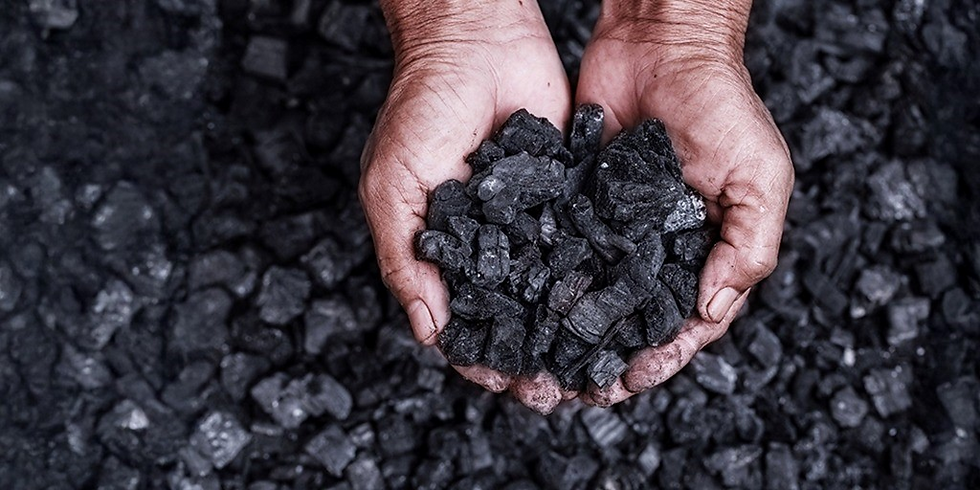Coal Communities Across Europe Embrace Renewable Future With EU-Backed Transition Plans
- Flexi Group
- Jul 22
- 4 min read
Across Europe, coal-dependent regions are confronting a moment of profound transformation, and the EU is stepping in to ensure the shift to clean energy doesn’t leave communities behind.

A major EU-funded research effort is helping these regions navigate a just transition—one that prioritizes local job creation, technological innovation, and social stability.
In southeastern Bulgaria, the Maritsa Iztok Complex stands as a vestige of the continent’s fossil fuel past. Since the 1950s, this sprawling network of four coal-fired power plants has fueled the region, drawing coal from three massive open-pit mines nearby. But with mounting environmental damage and EU climate goals pressing forward, the region is undergoing a long-overdue pivot to renewable energy that promises to redefine its economic future.
The Maritsa Iztok Complex is not an isolated case. In total, 31 coal regions across 11 EU countries still depend on the fossil fuel industry, with roughly 200,000 people employed in coal mining and coal-fired power generation. Regions like Western Macedonia in Greece, known for its highly polluting lignite operations, and Mureș county in Romania, similarly reliant on coal, face the daunting task of reinventing themselves.
The challenge goes far beyond replacing fossil fuels with wind or solar power. These communities must also develop entirely new labor markets. “It’s not only a technological challenge,” said Panagiotis Grammelis, research director at the Centre for Research and Technology Hellas (CERTH) in northern Greece. “It’s also a social one.”
Grammelis leads COALition, a pan-European, EU-funded initiative that aims to guide coal regions in Greece, Bulgaria, and Romania through the energy transition. Running until the end of 2026, the project emphasizes collaborative planning and local ownership of solutions.
“We are leaving the coal era and moving into the renewables era,” Grammelis said. “We have common problems, common policy issues – and we want a common innovation model to address them.”
COALition operates through regional hubs, which serve as platforms for collaboration between researchers, policymakers, businesses, and community members. By taking a bottom-up approach, the project ensures that each region’s specific needs are reflected in transition strategies, while also fostering cross-border cooperation.
Momentum is building across Europe. In 2024, solar electricity production surpassed coal for the first time, reflecting a broader decline in coal power that has been ongoing since 2003. The EU’s ambition to become the first climate-neutral continent by 2050 hinges on ensuring these transitions are fair—a goal supported by the Just Transition Mechanism, which will channel around €55 billion between 2021 and 2027 into affected regions.
Still, changing attitudes can be difficult—particularly in places like Stara Zagora, Bulgaria, where one-third of local employment is tied to the coal industry. “We’re at the very beginning and resistance is still very strong,” said Dr Rumyana Grozeva, executive director of the Stara Zagora Regional Economic Development Agency. “People don’t trust that the government can manage this well.”
Grozeva, a lifelong resident of Stara Zagora, emphasized the importance of public dialogue. “Transition is not just about planning, it is about communication,” she said. However, she noted that positive shifts are starting to emerge: “Encouraging conversations about the energy transition are finally starting to happen.”
Her team is actively working with local trade unions to identify the new professional skills that will be needed in a post-coal economy. For example, a notable skills gap in hydrogen technology has led them to develop proposals for integrating hydrogen training into Bulgaria’s national curriculum.
Grozeva believes that sectors like clean hydrogen, mechatronics, and sustainable agriculture offer the best potential for long-term regional prosperity. “These are the areas with the greatest potential for long-term, sustainable growth,” she said.
Stara Zagora is now positioning itself as one of Europe’s two hydrogen valleys, thanks to the launch of a Centre of Excellence in Hydrogen Technologies. The facility is aiming to produce 500 tonnes of clean hydrogen annually, with the broader goal of developing a complete local value chain—from design and manufacturing to energy generation using solar, hydrogen, and other renewables.
“Developing such an industrial symbiosis – and the skilled workforce to support it – could be a great opportunity for the region,” said Grozeva. She also underlined the importance of international collaboration, noting that sharing best practices among transitioning regions is crucial to success.
In Western Macedonia, CERTH is spearheading a similar effort, supported by the Just Transition Fund, to pilot green hydrogen technologies—covering everything from production and storage to end-use. The initiative is expected to generate cross-regional insights that will benefit both Greece and Bulgaria.
The European Commission’s Joint Research Centre estimates that clean energy industries could create up to 315,000 jobs in former coal-dependent areas, with that number potentially rising to 460,000 by 2050. But fair employment remains a critical challenge. “You have to substitute the high salaries of the fossil fuel sector with new positions that can offer similar rates of pay,” said Grammelis.
Looking forward, he views COALition as more than just a regional pilot—it could become a scalable model for fair energy transitions across the continent. “This could be a scalable model for fair energy transitions – something that could guide other areas facing the same challenges,” Grammelis said.
By fLEXI tEAM
.png)
.png)







Comments